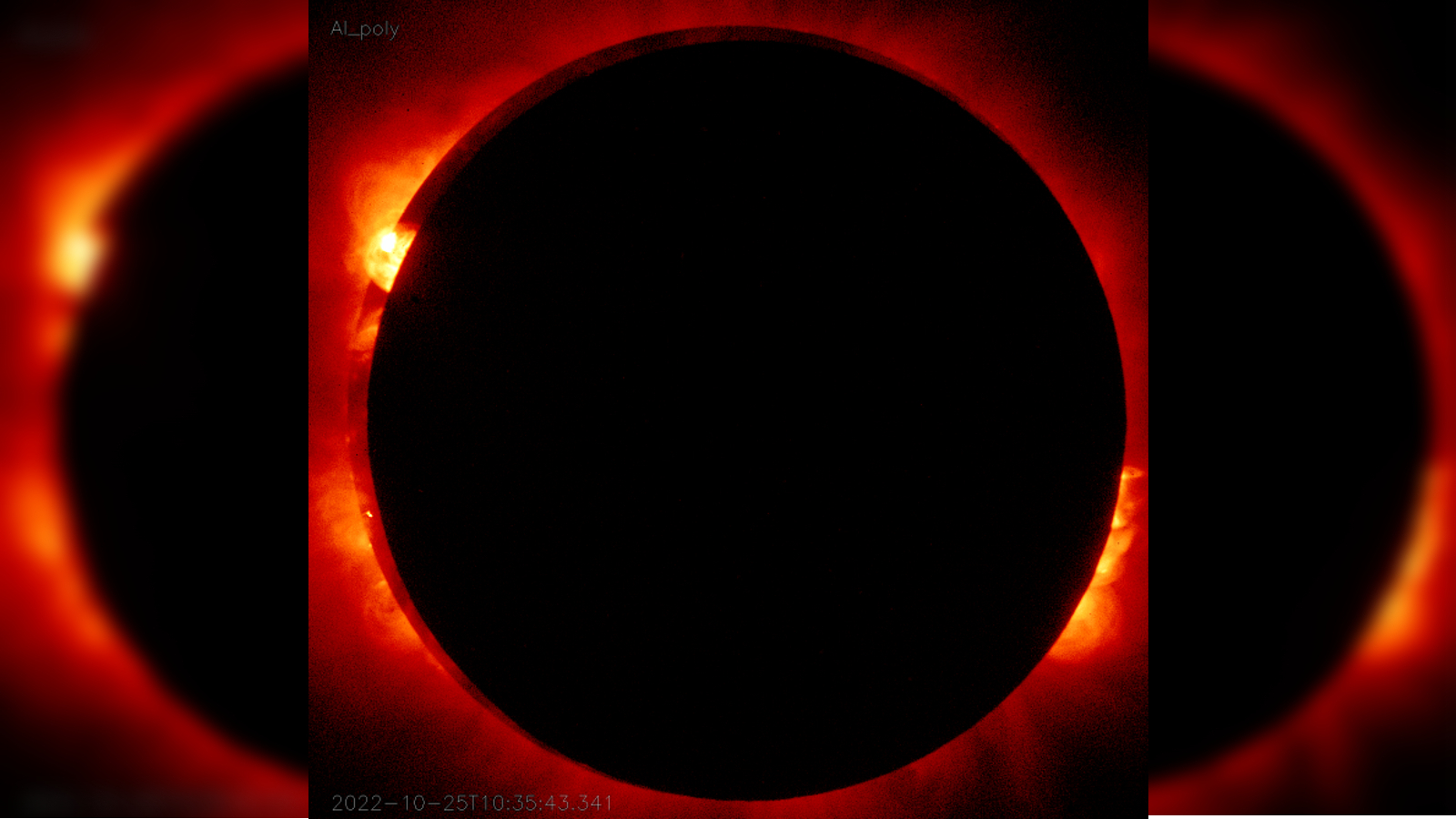A very rare 'hybrid' solar eclipse will take place Thursday, here's how to watch
A rare hybrid solar eclipse will appear over Oceania and Southeast Asia on Thursday, April 20. Here's what it means and how to watch it.

A rare "hybrid" solar eclipse is set to give viewers the show of a lifetime next week, as the moon blocks out the sun over Australia, East Timor and the eastern Indonesian islands.
On April 20, skywatchers in the region will see the moon's shadow pass in front of the sun, pocketing it like a gold coin in a magic show, before sliding away to unveil it in all its fiery glory.
The eclipse will start at 9:34 p.m. EDT on April 19 (01:34 UTC April 20) and end at 2:59 a.m. EDT (06:59 UTC April 20), according to timeanddate.com.
Related: Mars' death-spiraling moon captured in gorgeous eclipse video
The sky show is called a hybrid solar eclipse because it is a combination of both a total solar eclipse and an annular solar eclipse, presenting viewers with one eclipse, then the other as the moon's shadow glides over Earth's surface.
In a total solar eclipse the moon completely blocks out the sun, permitting the wispy strands of the solar corona to be briefly observed with the naked eye. In an annular solar eclipse, however, the moon is a little too far from Earth to totally block out the sun, creating a halo of burning plasma around the moon's outer edges that damages the eyes if viewed without eclipse glasses.
Whether viewers will see the eclipse as a total or an annular eclipse depends on where they are positioned along Earth's curved surface relative to the moon. Most eclipse-watchers will see an annular solar eclipse, but those who find themselves beneath a slender track running from Antarctica to Western Australia will witness a total eclipse.
Get the world’s most fascinating discoveries delivered straight to your inbox.
Additionally, two spots will present viewers with the eclipse transitioning from annular to total and back again, but they are in the middle of the Indian Ocean.
In Australia, a total solar eclipse will only be visible in one inhabited place — the small and remote town of Exmouth that is expected to see crowds of many thousands flocking to witness the perfect alignment of the sun, moon and Earth.
For Indigenous Australians — who used the skies for navigation and in their mythology — solar eclipses like these represented the brief conjoining of the Moon Man and Sun Woman, who otherwise chased each other around the sky. Rare solar eclipses were regarded by many communities as bad omens.
If you are in one of the regions lucky enough to witness the hybrid eclipse first hand, remember to wear special eclipse-watching glasses to protect your eyes from the sun's damaging glare.
For the rest of us, we can tune in to watch online at timeanddate.com, which will be broadcasting a livestream of the event.
The next hybrid solar eclipse will appear over North America on Nov. 14, 2031.

Ben Turner is a U.K. based writer and editor at Live Science. He covers physics and astronomy, tech and climate change. He graduated from University College London with a degree in particle physics before training as a journalist. When he's not writing, Ben enjoys reading literature, playing the guitar and embarrassing himself with chess.


